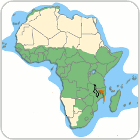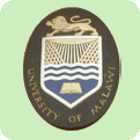Plant breeding programs in Malawi
 The Republic of Malawi is a landlocked country in southeast Africa that was formerly known as Nyasaland. Agriculture is the most important sector in Malawi’s economy, and maize is the national staple, which is grown by virtually all smallholders. Other important crops are rice, cassava, sorghum and millet.
The Republic of Malawi is a landlocked country in southeast Africa that was formerly known as Nyasaland. Agriculture is the most important sector in Malawi’s economy, and maize is the national staple, which is grown by virtually all smallholders. Other important crops are rice, cassava, sorghum and millet.
Agricultural research began in the 1900s under the colonial Department of Agriculture and later under the government of Malawi after independence in 1964. Today, there are about seven institutions that are involved in plant breeding work in the country. Plant breeding capacity in terms of qualified personnel has fallen steadily since 1985 and is rather low.
Plant breeding research is targeting traits that would mitigate most of the constraints that the agricultural industry is currently faced with. The traits include yield, disease resistance, long shelf life, consumer preferences, nutrient uptake, and drought tolerance, among others. Most released varieties have been of maize, because it is the staple food for the majority of Malawians but there has also been steady release of beans, roots, tubers, vegetables, fruits and cash crops including tea, tobacco, coffee, cotton and macadamia.
There are limited efforts to carry out sophisticated breeding experiments due to low human and infrastructure capacities. The major constraints of Malawi plant breeding activities are the lack of financial resources to carry out field and laboratory experiments and the inadequate number of breeders for each crop.
Research and education institutes with activities in plant breeding
Public Institutes
 |
Department of Agricultural Research Services (DARS)
|
 |
Bunda College of Agriculture
|
Private Institutes
 |
Agricultural Research and Extension Trust (ARET)
|
 |
Tea Research Foundation (TRF) of Centrel Africa
|
______________________________________
Information by J.D. Ambali and Wezi Msowoya (2004) - Information based on the Malawi's full report from the PBBC survey.
Last revised 09-03-2010, GIPB
